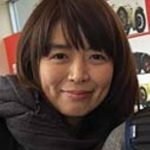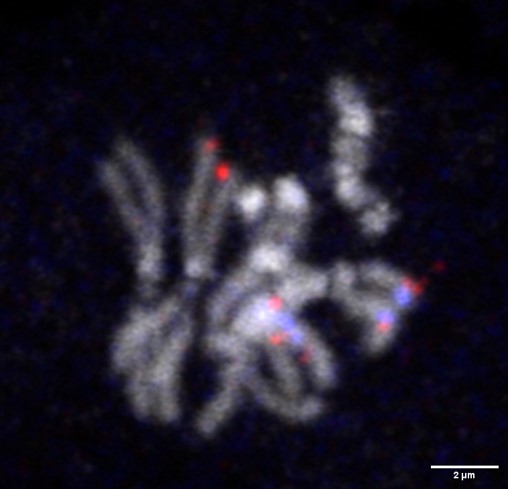 Assistant Professor
Assistant Professor
Department of Cell Biology
Contact
Phone: 860-679-3049
Email: inaba@uchc.edu
Office: E6053
UConn Health
263 Farmington Avenue
Farmington, CT 06030
Research Interests
WHAT ARE STEM CELLS?
Each of your tissue contain small number of stem cells who can keep producing specialized tissue cells with a more specific function throughout of your life.
When stem cells divide, their daughter cells become either new stem cells or specialized cells, such as blood cells, neurons, muscle cells or germ cells (e.g., sperm). No other cell in the body has the ability to divide forever.
WHY IS IT IMPORTANT TO UNDERSTAND HOW STEM CELLS ARE REGULATED?
- Understand how diseases occur. As stem cells keep producing tissue cells, dysregulation of them results in many disease conditions including cancers, tissue degeneration and aging. Better understanding of these conditions helps us to develop new therapeutic strategies for uncurable diseases.
- Generate healthy cells to replace damaged or lost cells. Stem cells can be used to produce specific cells that can be used in patients to regenerate or repair damaged tissues or organs.
WHAT DO WE DO?
We use Drosophila melanogaster (fruit flies) as a model system with a combination of genetics and various imaging techniques, including immunofluorescence, RNA and DNA FISH (fluorescent in situ hybridization), and long-term live-imaging. Owing to a simple anatomy and abundant genetic tools, this system is especially suited to discover previously unrecognized regulatory mechanisms.
Niche ligand diffusion ensures spatial control of the signal
In the Drosophila testis, germline stem cells (GSCs) are continuously producing sperm throughout the fly’s lifetime. When a GSC divides in niche, one daughter cell remains a GSC, while the other daughter cell starts differentiation. Niche derived BMP ligand has been thought to only activate GSCs but no other daughter cells despite of physical proximity of these cells. Using genetically-encoded nanobodies called Morphotraps, we blocked diffusion of BMP ligand without interfering with niche-stem cell signaling. Unexpectedly, we found that the diffusible fraction of ligand has opposite effect on the cells located inside and outside of the niche. It requires to promote differentiation of cells outside of the niche, while maintaining stemness of the cells inside of the niche, thereby ensuring spatial control of the niche with a single factor.
Current project is aiming to understand how the factor induces opposed responses in different cell types.
Related publication https://www.nature.com/articles/s41467-024-45408-7
Emerging function of somatic homolog pairing in stem cell regulation
The pairing of homologous chromosomes is a fundamental process for meiotic recombination to exchange maternal and paternal genomic information. Homolog pairing also occurs in non-meiotic cells in a broad range of organisms including mammals.
We recently found a change in the physical interaction of a homologous gene locus of a stem-cell specific protein, Signal transducer and activator of transcription 92E (Stat92E), during asymmetric division of GSCs. We found that the stat92E locus on two homologous chromosomes interacts closely (paired) in GSCs but becomes separated (unpaired) in the differentiating daughter cells. This “change” of pairing status seems to be required for prompt downregulation of this gene within next a couple of stages of differentiation. These results suggest a fascinating possibility that homolog pairing states is a potential mechanism that represents programmed gene expression changes which may occur in future. We are currently investigating more general roles of local homologous chromosome interaction on storage of cellar memory and cell fate determination.
Related publication https://www.nature.com/articles/s41467-022-31737-y
Funding: NIGMS 1R35GM128678-01
Selected Publications
Ridwan, Sharif M; Twillie, Autumn; Poursaeid, Samaneh; Beard, Emma Kristine; Bener, Muhammed Burak; Antel, Matthew; Cowan, Ann E; Matsuda, Shinya; Inaba, Mayu. Diffusible fraction of niche BMP ligand safeguards stem-cell differentiation. Nature communications 2024 Feb;15(1):1166.
Matthew Antel, Taylor Simao, Muhammed Burak Bener, Mayu Inaba. Drosophila CG17003/leaky (lky) is required for microtubule acetylation in early germ cells in Drosophila ovary PLoS One. 2022 Nov 7;17(11):e0276704.
Antel M, Raj R, Masoud MYG, Pan Z, Li S, Mellone BG, Inaba M. Interchromosomal interaction of homologous Stat92E alleles regulates transcriptional switch during stem-cell differentiation. Nat Commun. 2022 Jul 9;13(1):3981. doi: 10.1038/s41467-022-31737-y. PMID: 35810185 Free PMC article.
Inaba M, Ridwan SM, Antel M. Removal of cellular protrusions. Semin Cell Dev Biol. 2022 Sep;129:126-134. doi: 10.1016/j.semcdb.2022.02.025. Epub 2022 Mar 5. PMID: 35260295 Review.
Sardi, Justin; Bener, Muhammed Burak; Simao, Taylor; Descoteaux, Abigail E; Slepchenko, Boris M; Inaba, Mayu. “Mad dephosphorylation at the nuclear pore is essential for asymmetric stem cell division“. Proceedings of the National Academy of Sciences of the United States of America 2021 Mar;118(13).
Ladyzhets, Sophia; Antel, Matthew; Simao, Taylor; Gasek, Nathan; Cowan, Ann E; Inaba, Mayu. “Self-limiting stem-cell niche signaling through degradation of a stem-cell receptor“. PLoS biology 2020 Dec;18(12):e3001003.
Antel, Matthew; Baena, Valentina; Terasaki, Mark; Inaba, Mayu. “Ultrastructural Analysis of Cell-Cell Interactions in Drosophila Ovary“. Methods in molecular biology (Clifton, N.J.) 2021 Jan.
Antel, Matthew; Inaba, Mayu. “Modulation of Cell-Cell Interactions in Drosophila Oocyte Development“.Cells 2020 Jan;9(2).
Mayu Inaba, Dorothy R. Sorenson, Matt Kortus, Viktoria Salzmann, & Yukiko M. Yamashita. “Merlin is required for coordinating proliferation of two stem cell lineages in the Drosophila testis“. Scientific Reports 7: 2502, DOI:10.1038/s41598-017-02768-z. May 2017.
Cuie Chen, Mayu Inaba, Zsolt G Venkei, Yukiko M Yamashita. “Klp10A, a stem cell centrosome-enriched kinesin, balances asymmetries in Drosophila male germline stem cell division“. eLife 2016;5:e20977. http://dx.doi.org/10.7554/eLife.20977.
Inaba and Y. M. Yamashita, “Evaluation of the Asymmetric Division of Drosophila Male Germline Stem Cells.” Methods Mol. Biol., vol. 1463, pp. 49–62, 2017.
Chaturvedi, M. Inaba, S. Scoggin, and M. Buszczak, “Drosophila CG2469 Encodes a Homolog of Human CTR9 and Is Essential for Development.” G3 (Bethesda)., Sep. 2016.
Inaba, Y. M. Yamashita, and M. Buszczak, “Keeping stem cells under control: New insights into the mechanisms that limit niche-stem cell signaling within the reproductive system.” Mol. Reprod. Dev., vol. 83, no. 8, pp. 675–83, Aug. 2016.
Buszczak, M. Inaba, and Y. M. Yamashita, “Signaling by Cellular Protrusions: Keeping the Conversation Private.” Trends Cell Biol., vol. 26, no. 7, pp. 526–34, Jul. 2016.
Inaba, M. Buszczak, and Y. M. Yamashita, “Nanotubes mediate niche-stem-cell signalling in the Drosophila testis.” Nature, vol. 523, no. 7560, pp. 329–332, Jul. 2015.
Inaba, Z. G. Venkei, and Y. M. Yamashita, “The polarity protein Baz forms a platform for the centrosome orientation during asymmetric stem cell division in the Drosophila male germline.” Elife, vol. 4, p. e04960, Jan. 2015.
Salzmann, M. Inaba, J. Cheng, and Y. M. Yamashita, “Lineage tracing quantification reveals symmetric stem cell division in drosophila male germline stem cells.” Cell. Mol. Bioeng., vol. 6, no. 4, pp. 441–448, 2013.
Inaba and Y. M. Yamashita, “Asymmetric stem cell division: Precision for robustness.” Cell Stem Cell, vol. 11, no. 4. pp. 461–469, 2012.
M. Roth, C.-Y. Y. A. Chiang, M. Inaba, H. Yuan, V. Salzmann, C. E. Roth, and Y. M. Yamashita, “Centrosome misorientation mediates slowing of the cell cycle under limited nutrient conditions in Drosophila male germline stem cells.” Mol Biol Cell, vol. 23, no. 8, pp. 1524–1532, Apr. 2012.
Inaba, H. Yuan, and Y. M. Yamashita, “String (Cdc25) regulates stem cell maintenance, proliferation and aging in Drosophila testis.” Development, vol. 138, no. 23. pp. 5079–5086, 2011.
Inaba, H. B. Yuan, V. Salzmann, M. T. Fuller, and Y. M. Yamashita, “E-Cadherin Is Required for Centrosome and Spindle Orientation in Drosophila Male Germline Stem Cells,” PLoS One, vol. 5, no. 8, p. e12473, Jan. 2010.
